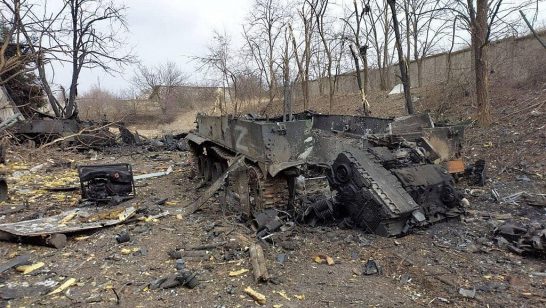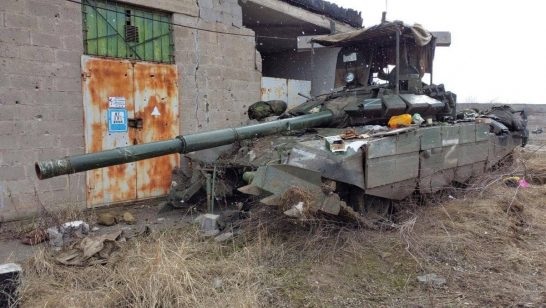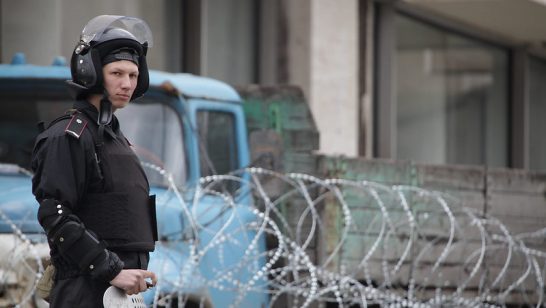
It is theoretically possible that in the confrontation between the West and Russia over Moscow’s war against Ukraine, the collective West will crack or that Putin’s Russia will genuinely sue for peace. It is also theoretically possible, as Dani Rodrik and Stephen Walt contend, that the world’s great powers could agree some basic guidelines that would allow them to move away from confrontation.
But these authors would probably agree that it looks overwhelmingly more likely that the world faces a protracted period of acute, militarised, strategic confrontation between Russia and the West, and that the West and China risk slipping into something similar. Robert Legvold has recently elegantly made the case.
Whether or not one chooses to call these confrontations cold wars (small c, small w) – and I believe it is more useful to do so than not, despite the profound differences with the twentieth century – they have become sharply more acute with the Xi-Putin 4th February joint declaration of “no limits” friendship, Russia’s latest 24th February invasion of Ukraine, and Moscow’s most recent escalations.
Choices are being made in the heat of the moment that many may come to repent at leisure. The stakes are huge. If we have to be in a cold war, policymakers need an analytical framework for it. It is time for all sides to ask coolly “What kind of cold war do we want to have?”
If we have to be in a cold war, policymakers need an analytical framework for it. It is time for all sides to ask coolly 'What kind of cold war do we want to have?' Adam Thomson
Because although it may now be hard to escape a cold war, especially between Russia and the West, countries can still make real choices that affect the course of the confrontation. Moreover, that confrontation’s trajectory is not all one way. The Russia-Ukraine grain deal illustrates how key actors, including Russia, the US, and the EU, can soften their postures when it suits them.
This is not to suggest that all the choices are in each actor’s hands – the adversary has a vote, and so does the larger international community. Nor is it to suggest that the decision-making is ever monolithic or that any previous cold war is a guide.
Nevertheless, there are at least four axes along which all states involved should be considering their positioning as they pursue their clashing desired outcomes. The conclusions they reach may be opposing ones, but there are still unilateral steps that can make a difference for better or worse. There may be areas of common ground on which to build less bad outcomes and looking at positioning along these axes and the interplay between them might help capitals judge more clearly their own risk appetites.
There are at least four axes along which all states involved should be considering their positioning as they pursue their clashing desired outcomes. Adam Thomson
The four choices are
- How deep or wide do we want the confrontation to be?
- How fast or slow do we want the confrontation to go?
- How many other countries do we want to involve?
- How more or less dangerous do we want this confrontation to become?
This commentary merely sketches these choices in order to make the point that they exist and that all the protagonists should step away from the immediate pressure of events to consider their answers. But each question – and no doubt many others – would repay much greater study.
For all states, there are arguments on each side of each of these four choices. The snap, default setting for at least some actors in both Moscow and individual Western capitals has been to answer ‘yes’ to all of the above. Make it deep on coercion and wide across most domains of international intercourse and seek to implicate third countries (even at the risk of deepening the US-China confrontation into a cold war) and make it more rather than less dangerous – all in the hope of quickly cowing the adversary and thus avoiding the costs and difficulties of a long cold war. Thus, states are decoupling and coercing across multiple domains from information to economics to space; seeking to win others in the international community over to their point of view; and escalating fast.
For other actors, perhaps particularly in certain European capitals, Beijing, and the ‘Global South’, the answers seem to be all at the opposite end of the spectrum: down-play the intensity of the issues and resulting confrontation; don’t let it infect too much of even the economic domain, let alone other international spaces; don’t let it affect my nation; and for goodness’ sake don’t do anything stupidly dangerous – a plague on both your houses if you do.
The clearer it becomes that no side is likely to gain a decisive advantage, the more pressing become the choices along the four axes before the confrontation ossifies, final courses are set, and the die is cast on who will win over the long haul.
President Putin probably believes that General Winter will come to Russia’s aid as he has done before and that a long cold winter without Russian gas or oil will break Western cohesion and split the West from Ukraine.
For President Xi, despite the geopolitical advantages of the Russia-West confrontation so far, time may now be shortening as it becomes harder to insulate China from the unwanted effects of a Russia-West cold war that grows ever deeper, wider, and more dangerous.
As for ‘the collective West’, it still thinks it will in the end prevail. In other words, that time is on its side. This belief may be fed by a dangerously false analogy with the last cold war. But it is not analytically unreasonable to gamble, like Kennan’s Long Telegram in 1946, on the resilience of Western societies and the qualities of Western governance.
If that is the gamble that Western leaders choose to make, then they would be wise to do so consciously, explicitly, and operationally. They do not have to be at the same end of each axis. It might make sense, for example, to go deeper on the confrontation with Moscow militarily and economically. But it is not so clear that, for a long-haul effort, it would make sense to go wide across domains rather than protecting areas of international business and even relations with Russia, where it is in the West’s interests to get business done. Keeping the West open to Russian visitors, scholars and scientists the better to keep Russian minds open to the West.
Similarly, it could make sense to try to contain the confrontation and not allow it to derail and side-track Western relations with most third countries and a challenging China but, rather, to accelerate efforts to offer more convincing, more self-aware Western narratives about the planet’s future together. If time is on the Western side, then it certainly makes sense to aim for less dangerous confrontation rather than more, exploring what can be done with diplomacy, calibrated measures of restraint, and only the gradual turning up of the heat for a Russian change of direction – boiling President Putin’s frog.
Above all, it will be important to attend to domestic and multilateral politics. As in the last cold war so in the new ones, the quality of each side’s alliances, societies and ways of life will be crucial for positioning along the four axes and for outcomes over the long haul.
The opinions articulated above represent the views of the author(s) and do not necessarily reflect the position of the European Leadership Network or all of its members. The ELN’s aim is to encourage debates that will help develop Europe’s capacity to address the pressing foreign, defence, and security policy challenges of our time.
Image: Flickr, US Army



